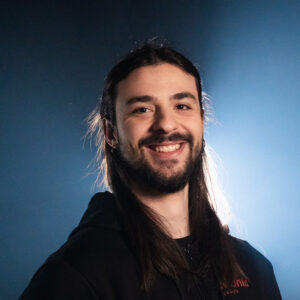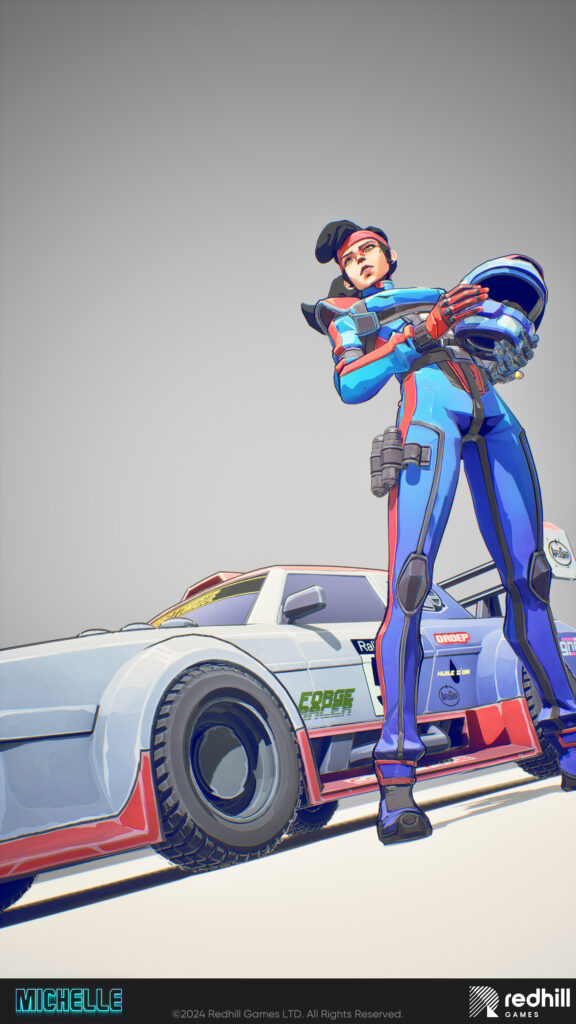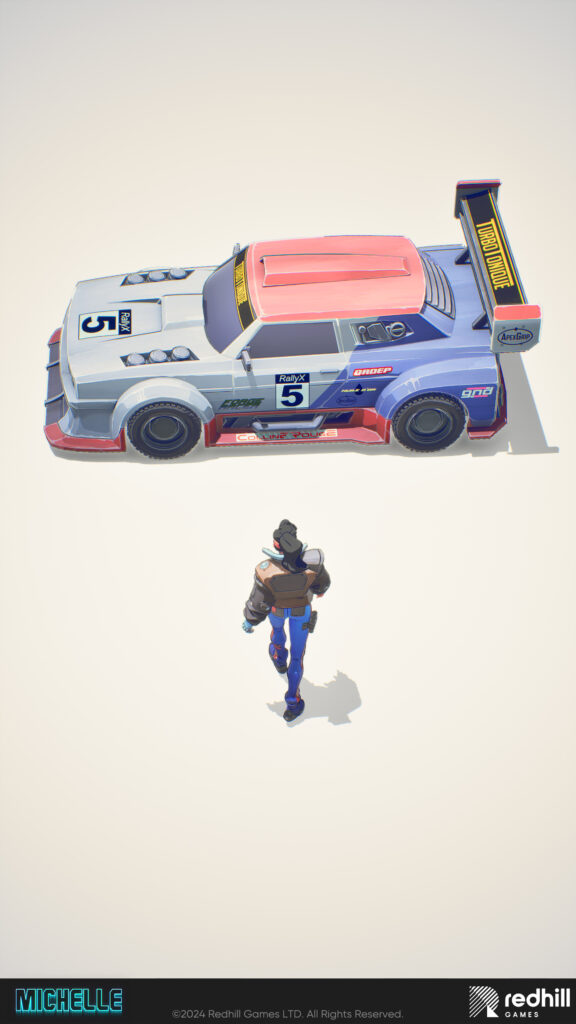Michelle
Team:
Project leads
Juho Salila
Iiro Harra
Production
Jinesha Gandhi
Character Art/Art Direction
Paul Ruano-Borbalan
Animation
Lauri Salo
Tech Art
Pedro Borges
VFX
Adiyar Aidarbekov
Audio
Vladislav Isaev
I was really drawn to Paul Ruano-Borbolan’s character design and wanted to bring it to life. The hardest part was deciding what to cut and what to keep, and how to make everything flow nicely. We haven’t nailed down everything for the final full-length version yet, but hopefully we’ll get a chance to finish it. We had so many cool ideas for shots that would’ve been really fun to animate. Doing the animation in stepped interpolation to emulate hand-drawn anime was a blast, and I’d love to explore that in a gameplay context.

Lauri Salo
Principal Animator

Pedro Borges
Technical Artist
Personally, I love and get inspired by movies and games with a similar style, like Spider-Verse, Valorant, League of Legends cinematics, Marvel Rivals, Apex, and others. It wasn’t about technical limitations – we just decided to pursue this style. For me, the biggest challenge was figuring out how to achieve the hand-drawn, 2D-inspired style in a 3D, real-time environment – and do it quickly. Since this was for a cinematic, we could’ve handled some effects in post-production, but we decided to create everything entirely in Unreal Engine. Together with Paul, I was responsible for implementing the visual style, from developing the character and environment shaders to the post-process effects.
When we looked at references, we realized traditional cel shading wouldn’t be enough. We needed a painted normal workflow for the characters, weighted outlines, hatched lines in the transition from midtones to shadows, and smears or lines to convey movement instead of traditional motion blur. Out of all these, the most challenging was definitely the movement smears.
What I enjoyed most was the synergy within the team. Everyone, across all disciplines, was equally ambitious and committed to pushing boundaries, even with the tight timeframe. Plus, the freedom to experiment with wild ideas made the whole process incredibly fun. That’s how we came up with the motion smears and the ‘super saiyan’ shot.
For the visual effects on Michelle, it was tricky at first because we wanted to incorporate “impact frames” in the PowerUp shot. Impact frames are stylized, usually monochromatic, drawings that give an extra punch to the moment. We created a ScreenSpace radial effect, adding customizable lines on the screen with the center positioned at the battery/heart.Another issue was frame rate. All the VFX and animated shaders had to run at a uniform 15 frames per second, since Unreal Engine doesn’t have that functionality by default. To maintain consistency throughout the sequence, we had to implement a “TimeStep” function set to 1/15th of a second in every shader and particle system. This was crucial in preserving the anime-style flow.

Adiyar Aidarbekov
Senior VFX Artist

Vladislav Isaev
Lead Audio Designer
We aimed to recreate the sound of the ’80s, making something that feels like the intro to classic animated films. Our goal was to capture that nostalgic vibe and bring back the energy of those memorable themes.
Character art
Animation
TECHnical ART
Voronoi normals shader and its parameters.
Motion smear parameters in the viewport.
Painting Vertex color data for Weighted Outlines in Blender.
Painted normals workflow in blender (using exported Voronoi Normals as starting point).
VFX
Tube Speedlines Shader with TimeStep function.
Aura Glow Shader with TimeStepping and Viewport visual.
Impact Frames looped, Shader view.




